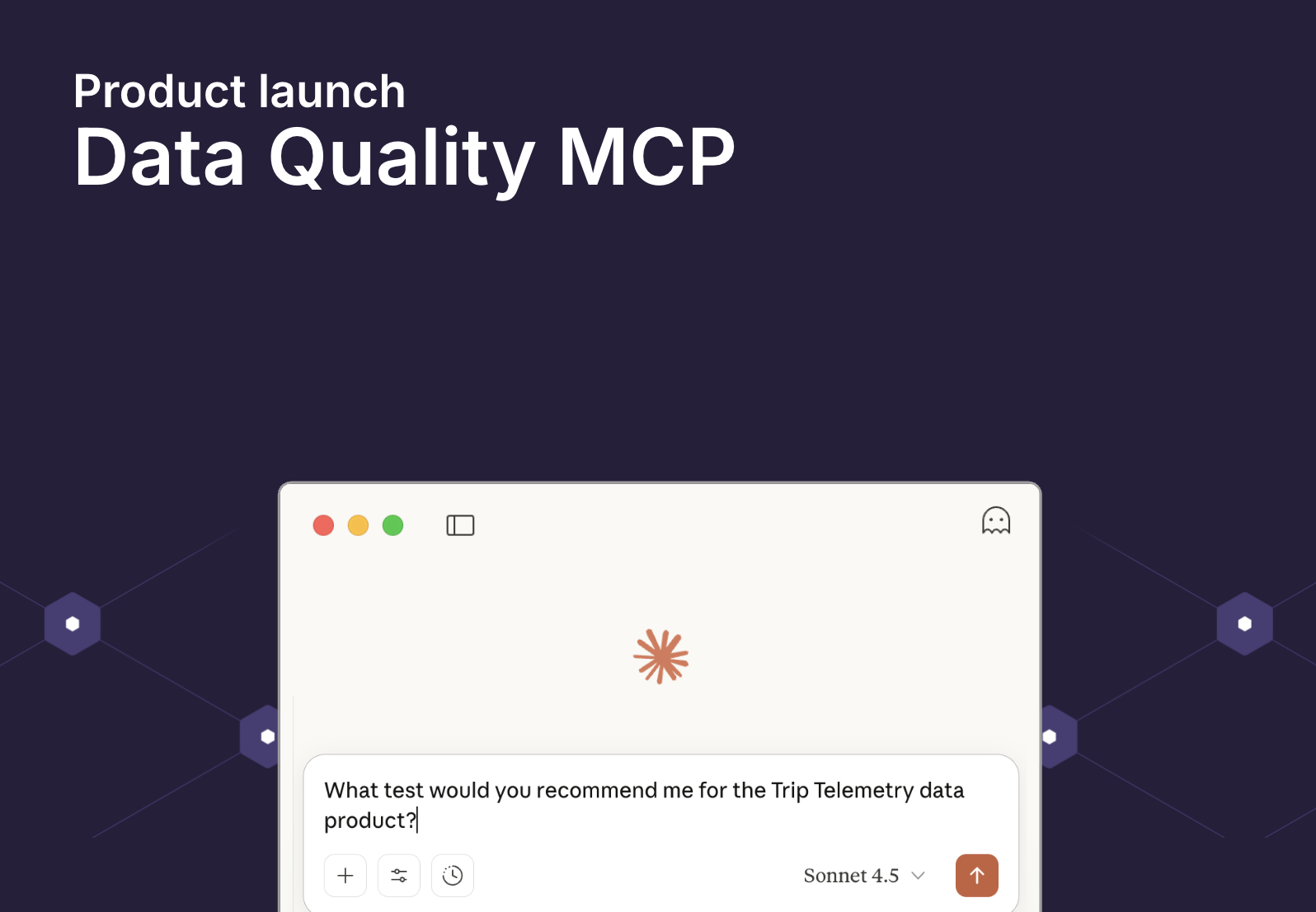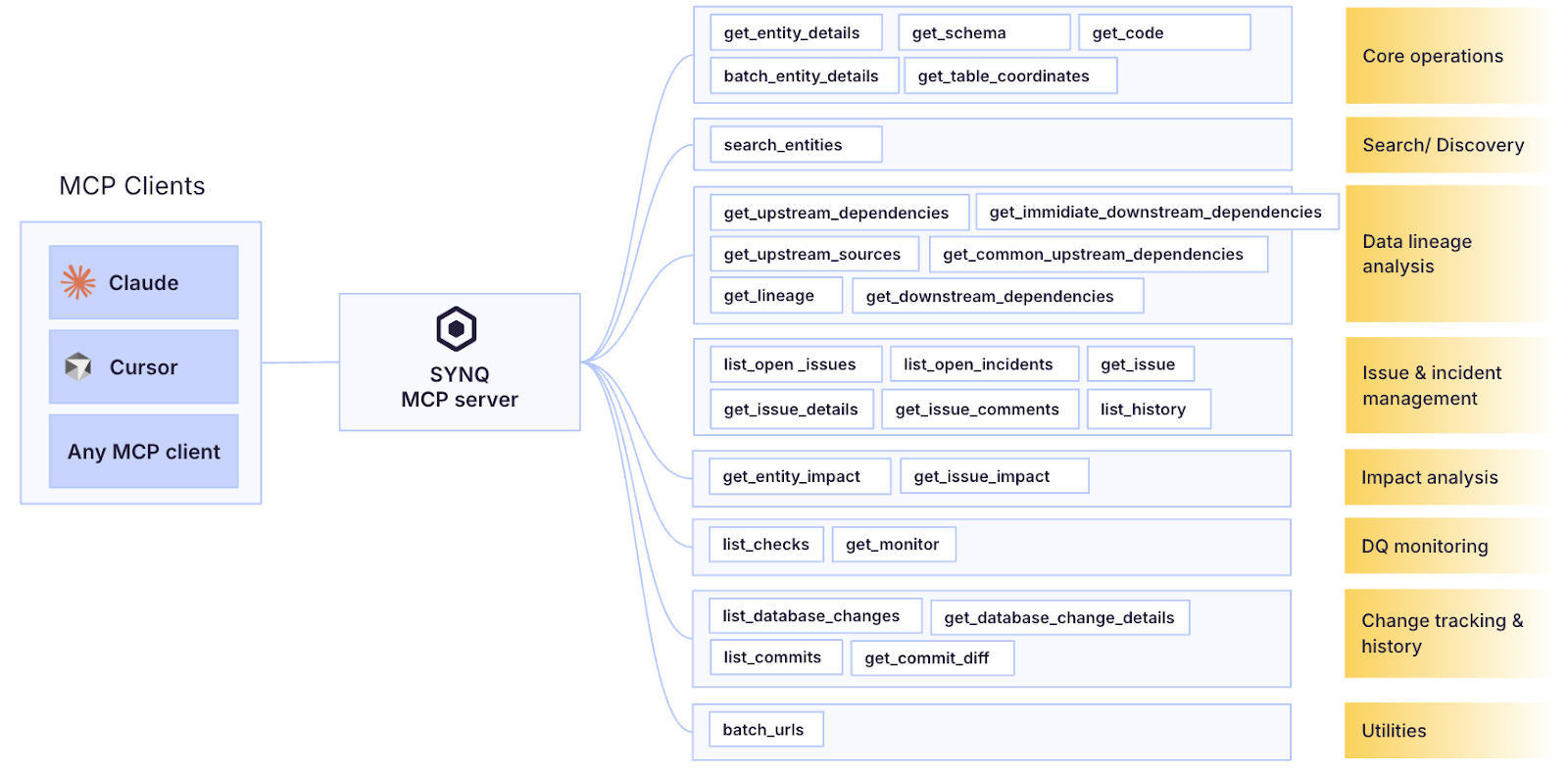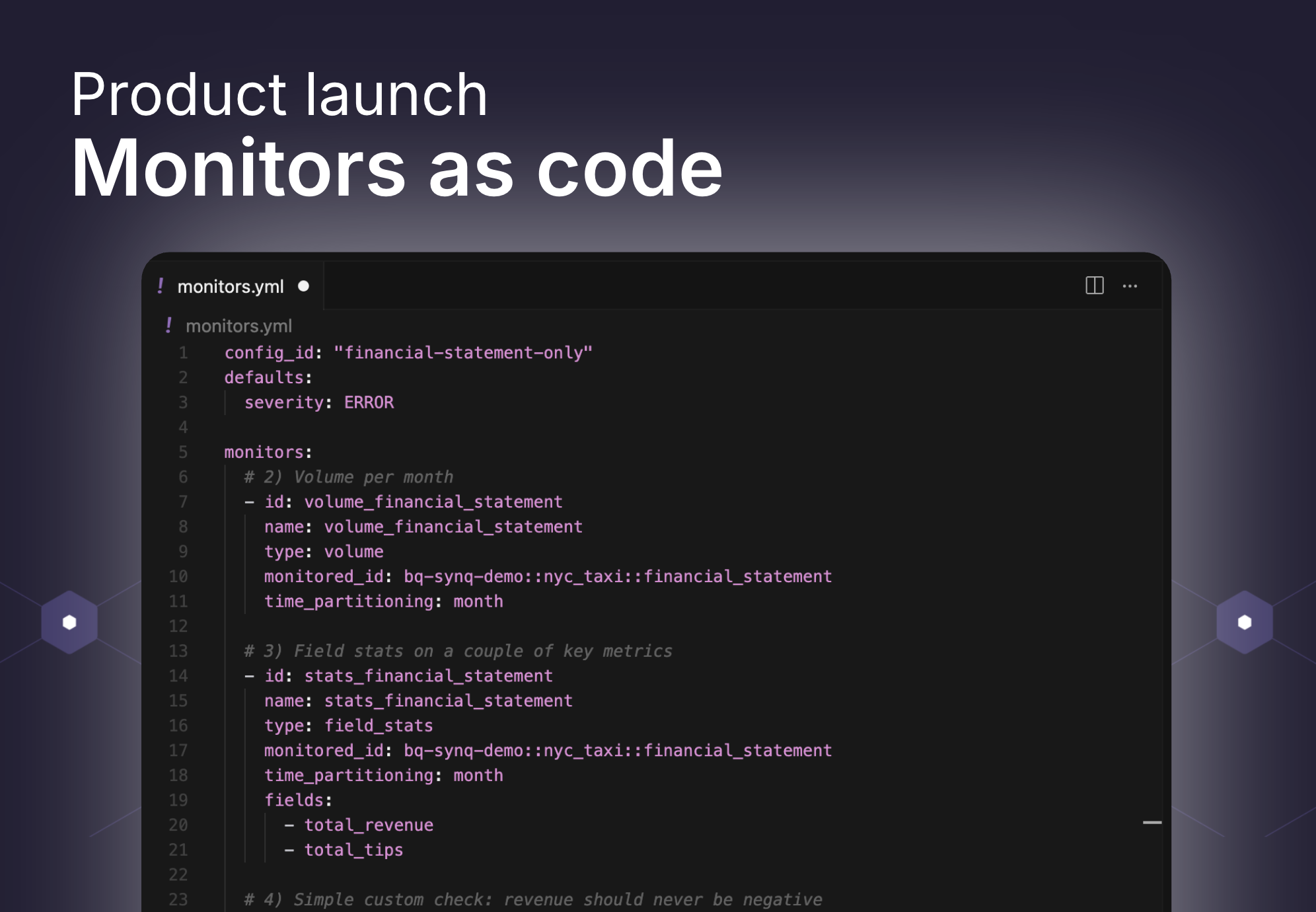Introducing SYNQs MCP server for data quality workflows

SYNQ’s data observability platform is used by scaleups and enterprises to help them build reliable data products. They use SYNQ to monitor data assets with self-learning anomaly monitors that catch unknown unknowns, manage the full issue resolution process from notifying owners to actionable root-cause analysis, and revisit weak areas with data quality metrics.
Earlier this year, we announced Scout, our autonomous data quality agent. Scout lets you use AI on top of your stack with rich data quality metadata. It can suggest tests for better coverage and perform autonomous root-cause analysis, working around the clock to debug issues and give clear suggestions.
Driven by strong customer demand, we are now making the underlying Scout engine available as an MCP server.
Watch 10 minute intro video to SYNQs data quality MCP

What is an MCP server for data quality
An MCP server is the glue between the data quality metadata SYNQ knows about and MCP clients like Claude Desktop and OpenAI. In simple terms, you can open Claude Desktop and ask, “What’s my test coverage on this data product?” and Claude will fetch the relevant metadata from SYNQ that would otherwise not be available in your editor.

You can also mix MCP servers for different jobs. For example, dbt has an MCP for discovery and querying, and Omni has an MCP for BI-focused workflows. SYNQ’s MCP focuses on data quality and reliability.
How the SYNQ MCP server works
SYNQ exposes a set of “tools” that the MCP can access. Think of each tool as a capability, similar to an API method. It is useful to know the available tools because they define what is possible and what is not.
LLMs can be eager to answer and may invent details when the data is missing. Knowing the tool surface helps set expectations for where answers are grounded.
SYNQ’s toolset spans dozens of workflows: lineage, issues and incidents, impact assessment, code commits, schema and change history, and more. This combination enables workflows that are otherwise tedious or brittle. For example, if you ask “What is the root cause of issue X,” the MCP will consider error messages, upstream issues, recent code and schema changes, and perform much of the analysis a senior data engineer would do.

You can find a full list of the tools supported in the SYNQ MCP documentation.
Using SYNQs MCP for data quality workflows
Our MCP is live with dozens of users who rely on it in weekly workflows: creating a data quality handover digest for a changing DataOps rota, or getting a fast read on likely root causes.
You can scope and manage permissions for the SYNQ MCP through the API setup. Set boundaries so it has read-only access by default, and align access with company policies. That gives you a fast path to experimenting without taking risks.

Teams tell us that learning to use AI tools like SYNQ’s MCP is a high-priority skill in the data team. As with any tool, value comes from knowing how to use it and understanding its limitations.
Here are the most common ways we see teams use our MCP
Data discovery
SYNQ’s MCP can see all integrated assets: dbt models, warehouse tables, dashboards, Airflow tasks and DAGs, and more. It helps you answer questions like finding models with a specific dbt tag or listing sources upstream of a target model.
Common questions:
- What are all my data models with a P1 tag?
- Which sources are upstream of my data model?
- Which are my most referenced data models?
Testing and monitoring
Testing is hard, which is why we wrote an entire guide about it. SYNQ’s MCP combines knowledge of existing tests, lineage, and asset importance to suggest relevant tests. Pair this with your domain understanding to get highly relevant test recommendations.
Common questions:
- Using the testing strategy in context.yml, which tests would you recommend for my model?
- Find data sources that do not have the recommended testing.
- Show all models that are upstream of a P1 model and have no tests.
Impact assessment
A visual lineage is not always the best way to judge impact. You often need to know whether key metrics or important dashboards are affected. The SYNQ MCP tools produce actionable summaries so you can make changes with confidence.
Common questions:
- What is the downstream impact of changing this column?
- Is there anything suggesting this issue is urgent?
- Will any dashboards be impacted if I change this column?
Root-cause analysis
SYNQ’s MCP is built on the same engine that powers Scout’s root cause analysis engine. Given a data issue, SYNQ correlates upstream issues, error logs, recent code and schema changes, and more. Expect much faster root cause analysis from day one.
Common questions:
- What are the most likely root causes of this issue?
- Which issue types are most common in the last 30 days?
- Which source owner group is most often associated with incidents?
Handovers
The MCP can aggregate metadata that gives a bird’s-eye view of data health. Teams use this in weekly workflows to create handover reports that are easy to digest, even for people without deep context.
Common questions:
- Give me a handover report on ongoing issues for the DataOps rota.
- Create a data quality digest I can share with stakeholders for the marketing pipeline.
- Compare test coverage and data quality uptime by team.
Tips for working with MCPs
We are still early in learning how to work with MCPs. Only teams at the frontier have these running in production today.
Here are a few tips we’ve found helpful when rolling out MCPs with customers. Keep it secure by deploying only on data you’re authorized to use, and when necessary, limit agents to metadata access. Make it reproducible, since asking an LLM twice can produce different results by having it generate a prompt or script that runs specific commands to ensure consistency week to week. Educate your wider team so everyone understands how and when to use it. And finally, keep experimenting, try things, learn, and refine as you go.
Getting started
SYNQ’s MCP is available to customers on all tiers. Learn more on the SYNQ MCP site.
You can also book a demo to see it on our demo set, or get help getting it up and running on your stack.



